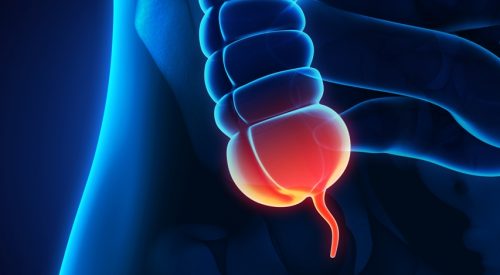Appendix and Appendicitis
The appendix sits at the junction of the small intestine and large intestine. It’s a thin tube about four inches long and normally sits in the lower right abdomen.
Appendicitis is a painful swelling of the appendix. It’s connected to the large intestine, where stools (faeces) are formed and is believed to be a remnant of the digestive system from when the human diet was primarily vegetarian.

What are the symptoms?
- A pain in the middle of your abdomen that may come and go
- Within hours, the pain travels to the lower right-hand side, where the appendix usually lies, and becomes constant and severe
- Pressing on this area, coughing, or walking may all make the pain worse. You may lose your appetite, feel sick, and occasionally experience diarrhoea.
Treatment options
Appendicectomy – removal of the appendix is one of the most common operations in the UK and has a high success rate. The operation is most commonly performed as keyhole surgery (laparoscopy), which involves making a few small cuts in your abdomen and using a camera to see inside.
Open surgery – where a larger, single cut is made in the abdomen, is usually carried out if the appendix has burst or the appendix is difficult to reach. Most people make a full recovery from an appendicectomy after a couple of weeks, although more strenuous activities may need to be avoided for up to six weeks after open surgery.
Antibiotics – while the diagnosis is in question, antibiotics can be prescribed to treat any potential infection that might be causing the symptoms. In general, antibiotics alone cannot effectively treat appendicitis.
